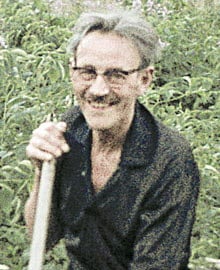The Evolution of Innovation
From a modest basement workshop in 1950’s Sweden to a global leader in retail display solutions, HL’s history is a testament to innovation and entrepreneurial spirit. But what does innovation mean in today’s environment, and how can one progress into the future while staying true to one’s core?In 1954, a traveling salesman in Borlänge, Sweden, named Harry Lundvall, noticed a significant problem in stores: products were poorly displayed, and price labels were hard to find. At a time when grocery stores were shifting towards self-service, Harry decided to take matters into his own hands. Armed with an iron and sheer enthusiasm, he bent the very first datastrip in his basement.
In 1954 Harry Lundvall bent the very first datastrip in his basement.

Driven By the Same Mission Today
As HL grew, so did its influence. In the 1990s, Harry’s family-owned business turned global when his granddaughter Lis and her husband Anders took over the company. Anders, Lis, and their team expanded the business by acquiring new customers and establishing a global presence.
HL’s commitment to innovation continues today, still driven by the same mission as Harry was: to create a better in-store experience for shoppers and personnel. In this article, Johannes Nijdam, Product Development Manager, discusses HL’s view on innovation and progress, and refining products to move them into the future.
"Every product development is unique; sometimes it’s from scratch, other times it’s about refining existing solutions."
Diverse Approaches to Product Development
Innovation at HL isn't a one-size-fits-all process. We use four distinct development paths: new products, range extensions, customer requests, and regulatory-driven innovations. Johannes points out, "Every product development is unique; sometimes it’s from scratch, other times it’s about refining existing solutions." This flexibility ensures we meet diverse customer needs while always seeking sustainable and cost-effective outcomes.
Collaboration and Ownership
At HL, innovation is a collaborative effort. When we identify a market opportunity or "white spot," we form cross-functional project groups involving product managers, sales teams, and factory experts. This approach not only brings diverse perspectives but also fosters ownership among all stakeholders. "Everyone involved has ownership," says Johannes, highlighting the importance of internal collaboration in the innovation process.
"In every product development, we think of how sustainable we can make it"
Sustainability as a Core Principle
Sustainability isn’t just an add-on at HL; it's embedded in our product development philosophy. "In every product development, we think of how sustainable we can make it," explains Johannes. This means prioritizing materials that are recycled or recyclable, designing products that are durable, and considering the entire product lifecycle. "It’s the basics, it’s our mission," he adds, emphasizing that sustainability is integral to HL’s identity.
The very first packaging for the datastrip.
A Broad and Ever-Expanding Assortment
Today, the datastrip is still one of HL’s bestselling products – but it has adapted to the future, and is now part of part of the HL Sustainable Choice range and available in partially recycled plastic or bioplastic. And durability is a big part of sustainability: HL’s long history has gained us the expertise to guarantee an efficient production of datastrips that last through the wear and tear of retail environment.
To prevent ageing, all datastrips contain protection against UV light – the material keeping from discolouring for a superior amount of time compared to other datastrips.
Johannes believes HL’s extensive range, combined with our relentless pursuit of innovation, sets us apart. "It’s never enough – what is innovation? It’s evolving and moves with the times" Johannes concludes.